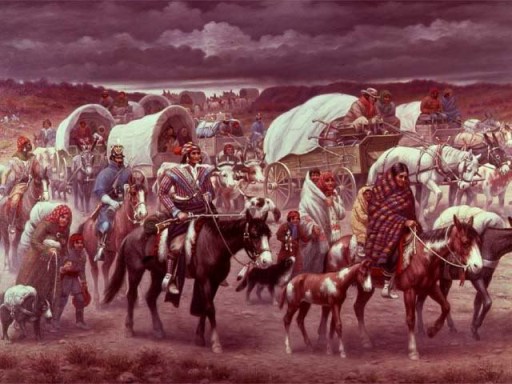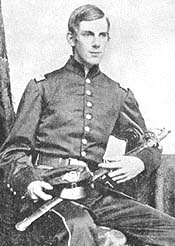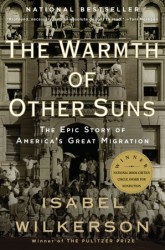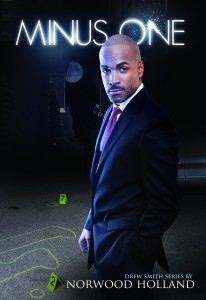Romeney Keeps Digging
September 19, 2012
Chocolate City’s gentrification and the trail of tears
August 5, 2012
Gentrification is destroying whole communities leaving lower income residents homeless and hopeless seemed to be Saturday’s message from the special screening of Chocolate City sponsored by Maximize Good at the Watha T. Daniel Public Library. A discussion with filmmaker Ellie Walton and DC residents followed. While the film was shot in 2003 almost a decade later the message is resonating with greater urgency. The documentary covers the displacement of over 400 families who lost their battle against forced displacement from the Arthur Capper/Carrollsburg public housing project in Washington, DC. Filmmaker Ellie Walton views Chocolate City as a call to action against nationwide gentrification and redevelopment programs. The film explores the impact of rapid gentrification in the area through the work of a local group of women working for justice in their neighborhood.
In 2001, DC received a $34.9 million Hope VI grant to redevelop the 23-acre Capper/Carrollsburg public housing project as a mixed-income community, with the 700 public housing units to be replaced one-for-one, along with 1,000-plus market-rate and workforce-rate rental and ownership units and 50 Section 8 ownership units. The project is scheduled to be completed this year.
The 400 displaced families were promised a one-to-one replacement of all demolished public housing units. That is, for every one family displaced they would be replaced with a unit in the new housing project. However residents later discovered lower income residents did not qualify. Income qualifications based on regional median income standard disqualified a majority of renters with few qualifying to buy. The average median household income inside the beltway is $90.
Hope VI requires mixed income residents meet an income threshold of 60% of the regional average median income. Many of the former residents were minimum wage earners and financially barred from returning. The reality is that mixed income does not include low income. The former residents soon found additional barriers to reentry including a vague rule that only residents in “good standing” would be allowed to return those without past felony convictions.
As the discussion progressed many spoke with concern about the unfairness of current policies with some telling of their own displacement. In the film examples were sited on how the loss of community and its support resulted in the death of older displaced residents. In the discussion a participant identified as Daniel born and raised in DC told of his being homeless and currently having wait listed 8 years for housing. Community activist Louise Thundercloud shared her personal fights with DC Council members characterizing the situation as “cultural genocide” and efforts by the moneyed establishment to destroy communities of color specifically Black and Latino.
One participant likened the situation to the West Bank Israeli settlements with the Palestinians being pushed off their homelands. The issue of affordable housing is not likely to go away. According to the Urban Institute the federal government provides housing assistance through rent subsidies, tax credits for building affordable housing, and block grants for affordable housing initiatives. But only about one of every four eligible households gets such aid. And subsidized housing is found disproportionately in distressed neighborhoods characterized by crime, poorly performing schools, and a lack of jobs.
Low-income families are being forced out of their communities similar to the forced displacement of Native Americans in the 1830s. The history lesson remains the same. Misguided government policies are doing more harm than good and by inadequately addressing the problem only perpetuates the cycle and generations of inescapable poverty and disadvantage. Chocolate City as the filmmaker declares does indeed stand as a call to action.

Health Care Reform saved by The Magnificent Yankee
June 29, 2012
 I’m no legal scholar, but correctly predicted the Supreme Court would uphold the Patient Protection and Affordable Care Act. That prediction was based on my understanding of stare decisis, the obligation of the courts to honor past precedents. Out of curiosity and for my own edification I read the relevant case history supporting the Commerce Clause arguments. While the government’s reliance on the Commerce Clause struck me as weak and in fact was struck down by the Court I wondered why they did not aggressively argue the Tax and Spending clause. As we all know there are only two things certain in life death and taxes, and the government’s power to tax is indisputable. The Tax and Spending Clause was used as a back up argument while the Commerce Clause argument seem to serve as a red herring.
I’m no legal scholar, but correctly predicted the Supreme Court would uphold the Patient Protection and Affordable Care Act. That prediction was based on my understanding of stare decisis, the obligation of the courts to honor past precedents. Out of curiosity and for my own edification I read the relevant case history supporting the Commerce Clause arguments. While the government’s reliance on the Commerce Clause struck me as weak and in fact was struck down by the Court I wondered why they did not aggressively argue the Tax and Spending clause. As we all know there are only two things certain in life death and taxes, and the government’s power to tax is indisputable. The Tax and Spending Clause was used as a back up argument while the Commerce Clause argument seem to serve as a red herring.
The court was faced with a dichotomy determination and it was Justices Story and Holmes who provided the answer. Roberts writes:
“The text of a statute can sometimes have more than one possible meaning. To take a familiar example, a law that reads “no vehicles in the park” might, or might not, ban bicycles in the park. And it is well established that if a statute has two possible meanings, one of which violates the Constitution, courts should adopt the meaning that does not do so. Justice Story said that 180 years ago: “No court ought, unless the terms of an act rendered it unavoidable, to give a construction to it which should involve a violation, however unintentional, of the constitution.” Parsons v. Bedford, 3 Pet. 433, 448–449 (1830). Justice Holmes made the same point a century later: “[T]he rule is settled that as between two possible interpretations of a statute, by one of which it would be unconstitutional and by the other valid, our plain duty is to adopt that which will save the Act.” Blodgett v. Holden, 275 U. S. 142, 148 (1927) (concurring opinion).
The most straightforward reading of the mandate is that it commands individuals to purchase insurance.” National Federation Of Independent Business Et Al. V. Sebelius, Secretary Of Health And Human Services, Et Al. ___U.S. ___ (2012)
Justice Holmes by reaffirming Justice Story’s dictum provided the necessary constitutional basis to uphold the Health Care Reform Act. Justice Oliver Wendell Holmes Jr. served as on the Supreme Court from 1902-1932. The 1950 Academy Award winning movie The Magnificent Yankee introduced me to Justice Holmes long before I had any interest in law school. The Boston blue blood was a wounded Civil War veteran who saw a lot action. He bequeath his entire estate to the U.S. Treasury and wrote the dissenting opinion in the Lochner vs. New York, 198 U.S. 45 (1905), a landmark case that held a “liberty of contract” was implicit in the due process clause of the Fourteenth Amendment. Holmes accused the majority of judicial activism, pointedly claiming that the case was “decided upon an economic theory which a large part of the country does not entertain. He attacked the idea that the Fourteenth Amendment enshrined the liberty of contract, citing laws against Sunday trading and usury as “ancient examples” to the contrary. He added, “Some of these laws embody convictions or prejudices which judges are likely to share. Some may not. But a constitution is not intended to embody a particular economic theory.”
President Obama has likened the Lochner case to this instant case. Lochner was about limiting the collective bargaining rights of employees in favor of the employer. Roberts in this instant rather than trying to fashion conservative reasoning to overturn the independent mandate he stayed true to the legal doctrines and the fundamental principles of jurisprudence upon which American law is based. Though much credit will be given to Justice Roberts for his decision in upholding the Affordable Care Act he must share that credit with Justice Holmes and Justice Story for mapping the direction.
Thank You Justice Holmes and Justice Story.
The Warmth of Other Suns by Isabel Wilkerson
September 30, 2011

The Epic Story of America’s Great Migration is a testimony to the 20th Century African American struggle when the railroad to freedom was no longer underground but remaining for some a journey no less fraught with danger and resistance. Isabel Wilkerson painfully details the life stories of three migrants who escaped the oppression of the Jim Crow South. From 1915 to 1970 six million Blacks joined the exodus abandoning the confederate states for the promise of a better life elsewhere–most often northern industrial cities. It was a time of lynching, voter suppression, intimidation, systematic disenfranchisement, oppressive labor conditions and terrorism by lynching and bombings.
The title The Warmth of Other Suns is borrowed from Richard Wright’s quote
I was leaving the South to fling myself into the unknown. I was taking a part of the South to transplant in alien soil, to see if it could grow differently, if it could drink of new and cool rains, bend in strange winds, respond to the warmth of other suns, and, perhaps, to bloom. On a broad canvas Wilkerson paints a riveting and moving account of the racism and injustice faced by Blacks throughout the 20th Century and looking back one wonders what did Southern White America expect to gain from Jim Crowism. It ultimately hurt the South retarding its economic development.
Ida Mae Brandon Gladney, George Swanson Starling, and Robert Joseph Perching Foster, were from Mississippi, Florida, and Louisiana respectively. Ida Mae was a cotten picker, mother, sharecropper’s wife and later matriarch. Dr. Robert Joseph Perching Foster a graduate of Morehouse and Meharry escaped the boondocks and bayous to live out the high life he dreamed of but not without his own tales of woe discrimination and humiliation. George Swanson Starling a fruit picker whose labor organizing activities on behalf of blacks forced him to flee Florida with white vigilantes on his heels.
Wilkerson carries us through the life stories of the three sharing their hopes and dreams. We rejoice at their milestones and achievements, despair with their loss and challenges, and finally mourn their deaths. And what do we learn? According to one reviewer “if the Civil War was fought over black freedom, then it appeared during the decades following the war that the South won. Until World War I came along, that is. The Great War marked the beginning of one of the most important and under appreciated revolutions in American history.” We learn the stereotypes of Black Southerners invading northern cities corrupting communities was not so. They brought a strong work ethic, were at higher education level than northern Blacks and Whites, and overall maintained stable married households. If anything they were corrupted.
The Warmth of Others Suns is a scholarly study delivering a history lesson and told through the eyes and in the words of Americans discounted and devalued by white society throughout their lives. It’s a moral story we should never forget. Without such works like Wilkerson’s future generations may never know the full extent of the struggle suffered by those who came before us, and no doubt we stand on the shoulders of giants.
If Obama Were White
July 16, 2011
Republicans have two goals in mind. Obstruct and prevent the reelection of Barak Obama and to prevent the raising taxes on the wealthy. Whether the American voters go along with the plan remains to be seen. In any event it’s become increasingly clear the GOP is playing a dangerous game willing to destroy the economy rather than raise taxes. And when Mitch McConnell stated his number one goal was to make Obama a one term president he meant what he said. It’s never been about what’s good for the country but what’s good for the Republican Party. Much of their opposition to Obama’s presidency can be laid at the feet of the Tea Party faction. The Republicans co-opted this partner in destruction hoping to harness the movement’s energy opposing Barak Obama and Democratic policies. Unfortunately the Tea Party has shown itself to be untameable.
Never before has raising the debt ceiling been linked to spending. This strategy laid down by the Republicans isn’t working and may well backfire. The Tea Party leaders including Bachmann and Palin are steeped in ignorance surrounding Economics and International Finance among other matters affecting Americans. As we watch the debt ceiling fight unfold let’s not forget how the Republican Party has led us down this road to perdition with two wars and tax breaks for the wealthy. Nothing good can come out of this fight for the Republicans.
Under President Obama, taxes are at the lowest level in 60 years but Republicans either fail to admit or are too stupid to look back in history. Experts agree that if the debt ceiling is not raised by August 2, the country–indeed the world–would face a “huge financial calamity.” No big deal the Tea Party. Most Americans are in agreement, the Republican stance is unfair and reasonable yet they continue marching toward that cliff.Unfortunately the rest of country is tied to their safety harness and likely to go down behind them.
One wonders if Obama were White would there such outrageous bitter caustic vitriol? The Republican’s double barrel destruction may backfire. Let’s hope.





